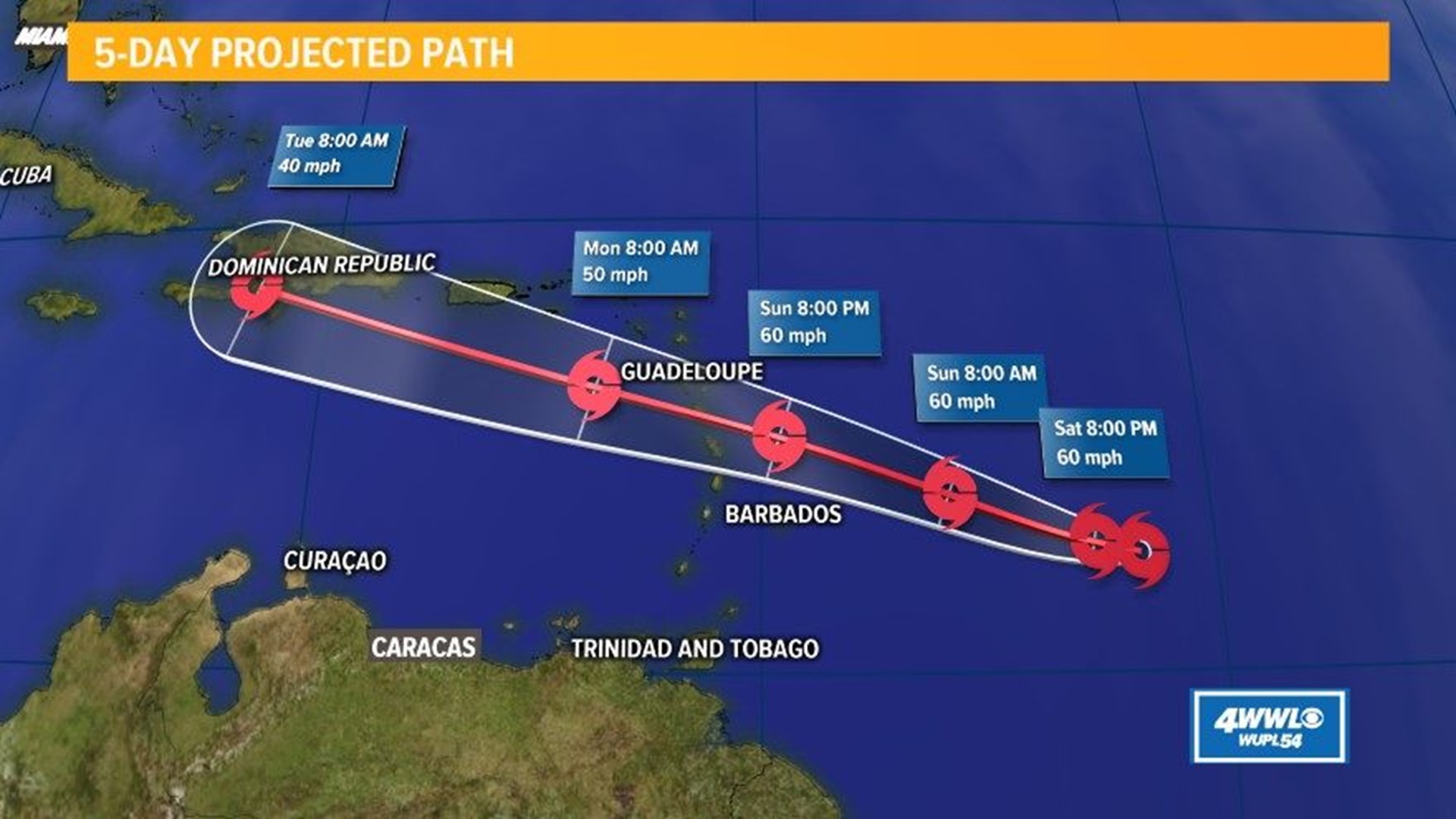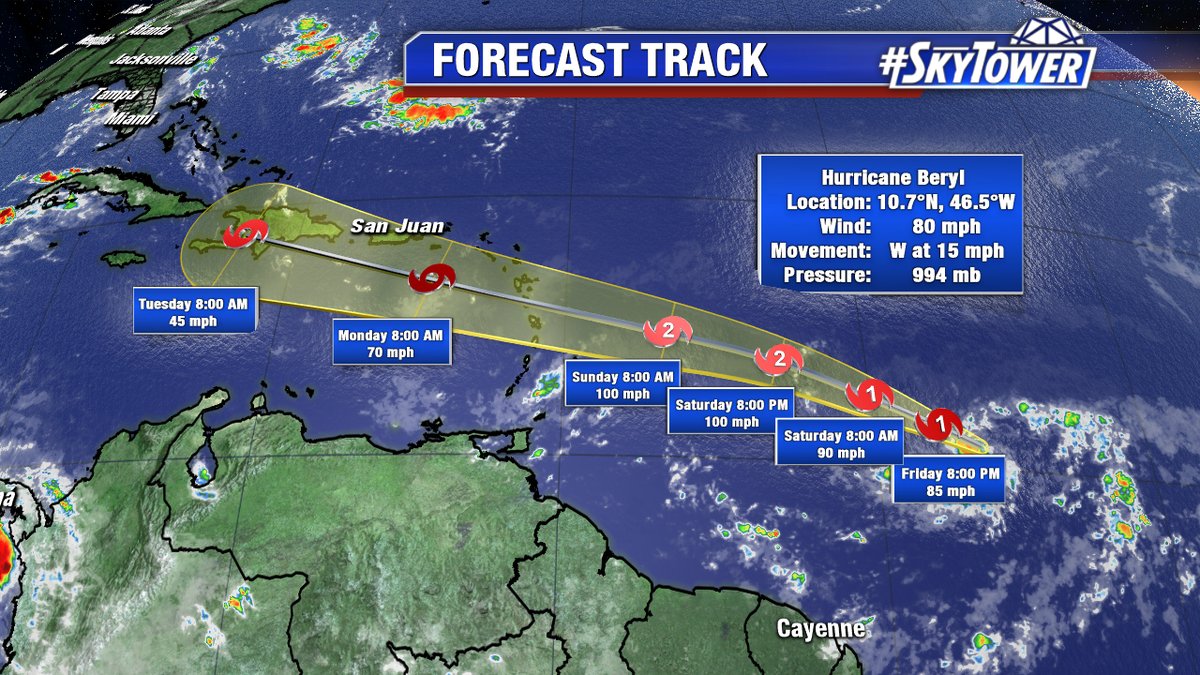Introduction: Hurricane Beryl Track
Tracking hurricane movement is crucial for safeguarding coastal communities. Hurricanes, colossal storms originating over warm ocean waters, possess the destructive power to unleash torrential rainfall, catastrophic winds, and devastating storm surges upon vulnerable coastlines. Accurate and timely tracking of these storms is essential for issuing early warnings, enabling evacuations, and implementing emergency response plans.
Historical Perspective

Hurricane beryl track – The history of hurricane tracking is a story of scientific advancement and innovation. Early methods of tracking hurricanes relied on observations from ships and land-based observers. These observations were often inaccurate and incomplete, making it difficult to predict the path of a hurricane.
Hurricane Beryl’s path continues to be closely monitored, with meteorologists predicting a slight shift in its trajectory. In the midst of this weather event, it’s inspiring to reflect on the resilience of those who have faced adversity. One such individual is Stephon Castle, a renowned philanthropist whose unwavering dedication to helping others serves as a beacon of hope amidst life’s storms.
As Hurricane Beryl’s track unfolds, we draw strength from the indomitable spirit of those like Stephon Castle, who remind us that even in the face of adversity, there is always reason for hope and inspiration.
In the early 20th century, meteorologists began using weather balloons to collect data on atmospheric conditions. This data allowed them to track hurricanes more accurately and predict their path more precisely. In the 1940s, the United States Navy developed radar technology, which allowed meteorologists to track hurricanes in real-time.
Major Hurricanes and Tracking Advancements
Some of the most devastating hurricanes in history have helped to drive the development of hurricane tracking technology. The Great Galveston Hurricane of 1900 killed more than 8,000 people and led to the establishment of the National Weather Service. The Okeechobee Hurricane of 1928 killed more than 2,500 people and led to the development of the Saffir-Simpson Hurricane Wind Scale.
As Hurricane Beryl tracks across the Atlantic, its path has drawn the attention of experts like Naji Marshall . Marshall, a renowned meteorologist, has been closely monitoring the storm’s trajectory, providing valuable insights into its potential impact. With Beryl’s path remaining uncertain, Marshall’s expertise and guidance will be crucial in ensuring the safety of those in its path.
In recent years, advances in computer technology have allowed meteorologists to develop more sophisticated hurricane tracking models. These models can now predict the path of a hurricane with greater accuracy and precision than ever before.
Data Collection and Analysis
Tracking hurricanes requires the collection and analysis of a vast amount of data from multiple sources. These sources include weather stations, satellites, and atmospheric models, each providing unique insights into the storm’s behavior.
Weather Stations, Hurricane beryl track
- Weather stations located along the coast and on islands provide ground-level observations of wind speed, atmospheric pressure, temperature, and precipitation.
- These observations are crucial for determining the storm’s intensity and direction.
- Weather stations also deploy weather balloons that carry instruments to measure conditions at different altitudes, providing vertical profiles of the atmosphere.
Satellites
- Satellites orbit the Earth, capturing images and data from space.
- They provide real-time observations of the storm’s structure, cloud patterns, and sea surface temperatures.
- Satellite data helps forecasters track the storm’s path and intensity, and monitor changes in its environment.
Atmospheric Models
- Atmospheric models are computer simulations that use mathematical equations to predict the behavior of the atmosphere.
- These models incorporate data from weather stations and satellites to generate forecasts of the storm’s track, intensity, and potential impacts.
- Models are continuously updated with new data, allowing forecasters to refine their predictions as the storm evolves.
Forecasting and Prediction

Hurricane forecasting is a complex and challenging task that requires a combination of scientific expertise and experience. Forecasters use a variety of techniques to predict hurricane tracks, including computer models, satellite imagery, and weather observations.
Computer models are the primary tool used for hurricane forecasting. These models use mathematical equations to simulate the atmosphere and ocean, and they can provide detailed information about the likely path and intensity of a hurricane. Satellite imagery is also used to track hurricanes, and it can provide information about the storm’s structure and wind speed.
Factors Considered in Hurricane Forecasting
There are a number of factors that forecasters consider when making hurricane predictions, including:
- Wind speed
- Atmospheric pressure
- Ocean currents
- Storm size
- Storm movement
- Environmental conditions
Forecasters use these factors to create a forecast track for the hurricane, which shows the likely path of the storm over the next several days. Forecast tracks are updated regularly as new data becomes available.
Examples of Successful and Unsuccessful Hurricane Forecasts
Hurricane forecasting is not an exact science, and there are many factors that can affect the accuracy of a forecast. Some of the most common reasons for forecast errors include:
- Changes in the storm’s intensity or direction
- Errors in the computer models
- Incomplete or inaccurate data
- Human error
Despite these challenges, hurricane forecasting has improved significantly in recent years. Forecasters are now able to provide more accurate and timely predictions, which has helped to save lives and property.
Communication and Dissemination

Effective communication and dissemination of hurricane forecasts are crucial for timely preparation and response. This section explores the methods employed to convey hurricane information to the public and the vital roles played by weather services, media outlets, and social media in ensuring widespread dissemination.
Weather Services
Weather services, such as the National Hurricane Center (NHC) in the United States, are responsible for monitoring and forecasting hurricanes. They issue regular advisories, warnings, and forecasts that provide detailed information about the hurricane’s location, intensity, and projected path.
Media Outlets
Media outlets, including television, radio, newspapers, and online platforms, play a significant role in disseminating hurricane forecasts and updates to the public. They translate complex meteorological data into easy-to-understand language and provide real-time updates on the hurricane’s progress.
Social Media
Social media has emerged as a powerful tool for hurricane communication. Platforms like Twitter, Facebook, and Instagram allow weather services and media outlets to share updates and connect with the public in real time. Additionally, user-generated content can provide valuable information about local conditions and impacts.
Importance of Effective Communication
Timely and effective communication of hurricane forecasts is essential for several reasons:
- It allows individuals and communities to make informed decisions about evacuation, sheltering, and other preparedness measures.
- It reduces confusion and panic by providing accurate and consistent information.
- It facilitates coordination between emergency responders and government agencies.
